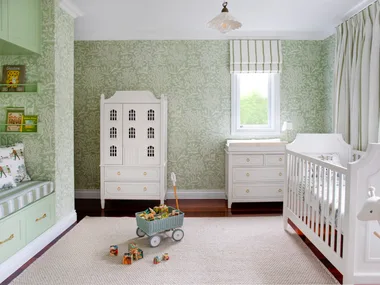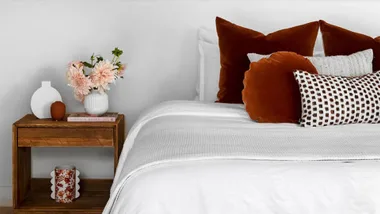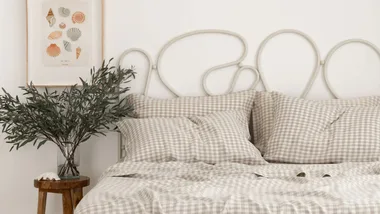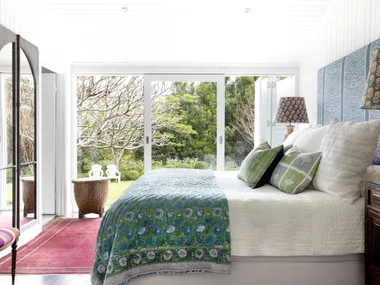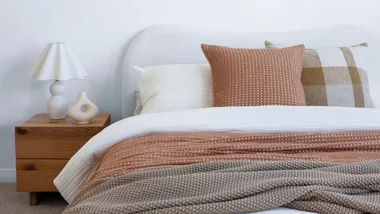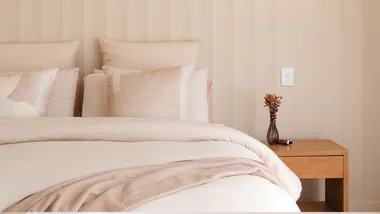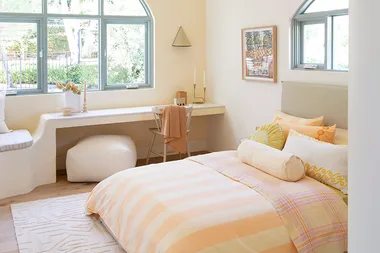Bringing together all of the design elements to create a beautiful bedroom that is both tranquil and inspiring takes careful planning. Bed linens, wall finishes, lighting and accessories all play a crucial role.
More than simply using a scattergun approach to buying items and choosing colours, working to a plan makes the difference between a space that’s pleasant and a cohesive, beautifully decorated room that exudes style and a little luxury.
If you’re finding it hard to get the look you’re after, or if something isn’t quite right, we’ve put together a checklist to design, decorate and style up the bedroom of your dreams.
7 steps to styling a stunning bedroom
1. Decide on a bedroom style
This is your starting point from which all decisions will flow. Picture a bedroom that you’ve visited that took your breath away. Was it a friend’s guest room, a hotel room or guesthouse, movie set or a magazine that inspired you?
Driven by a mixture of your own personal style and your favourite-ever bedroom space, take these ideas and work to emulate them in your own home.
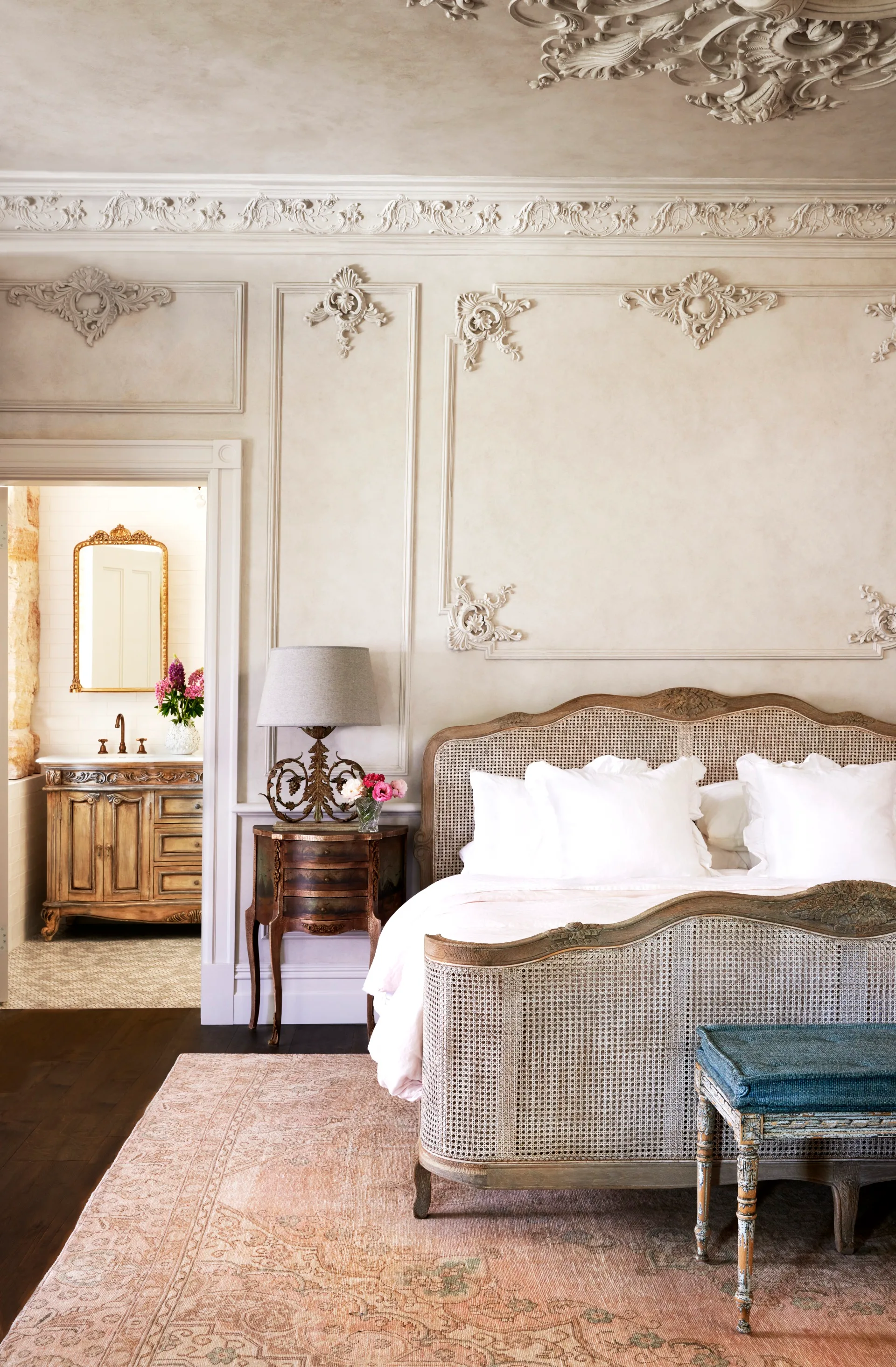
2. Build a mood board
Building a mood board is a powerful tool in creating the ultimate interiors space. Add to it your inspirational images – photos, brochures or tear-sheets from magazines to use as a base. Follow by layering samples of fabrics, paint swatches, colour and textures, flooring samples and more images of items you already own or those you plan to purchase.
Ultimately you will have built up a visual diary to follow. Your mood board will act as a reference when you’re making decisions on everything from your colour scheme to the finishing touches needed to bring your whole scheme together.

3. Create a strong colour base
Start with larger items, such as your chosen wall colour or use the existing character of the room to inform the palette. Consider the tones of your flooring as this is something that is fixed. Perhaps it’s a statement armchair or upholstered bedhead is driving your inspiration? Pick up these colours and tones as you choose bedlinen and other accessories.
Bring in accents from objects and your inspirational references to drive the colour palette beyond the monotone – perhaps pick up details of colour in a fabric pattern that may work well on a larger scale – as a solid block in an armchair or artwork.
“Don’t hold back on your favourite colours – mix rich and soft shades to create a gorgeous boudoir you’ll never want to leave.”
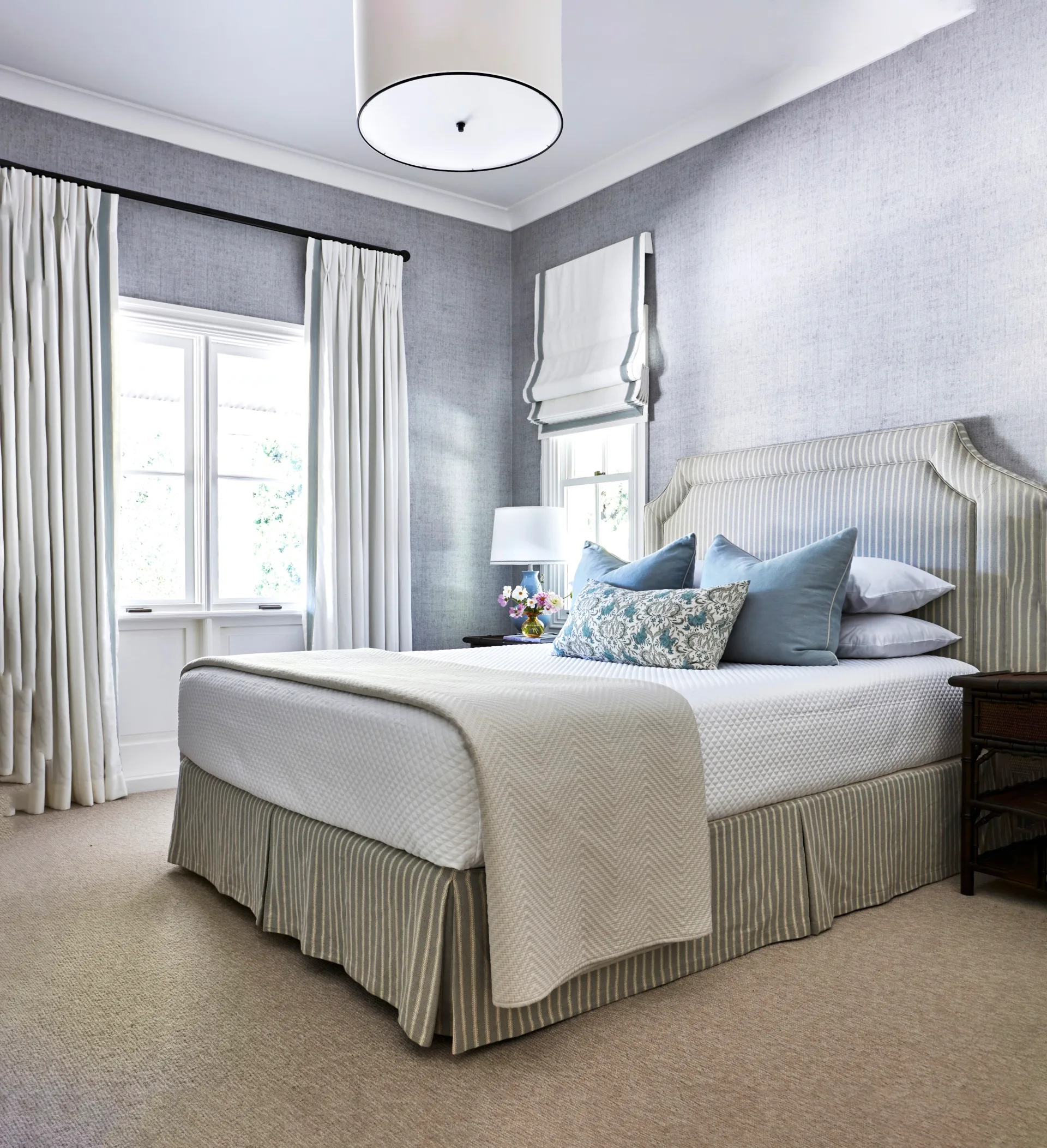
4. Layer with love
Surround yourself with layers of beautiful textures and calming hues in your choice of bedlinen. Choose the best quality sheets you can afford, then layer with blankets, bedspreads, coverlets and throws that bring in different textures, graduations of your colours and a mixture of patterns and plains in the fabrics.
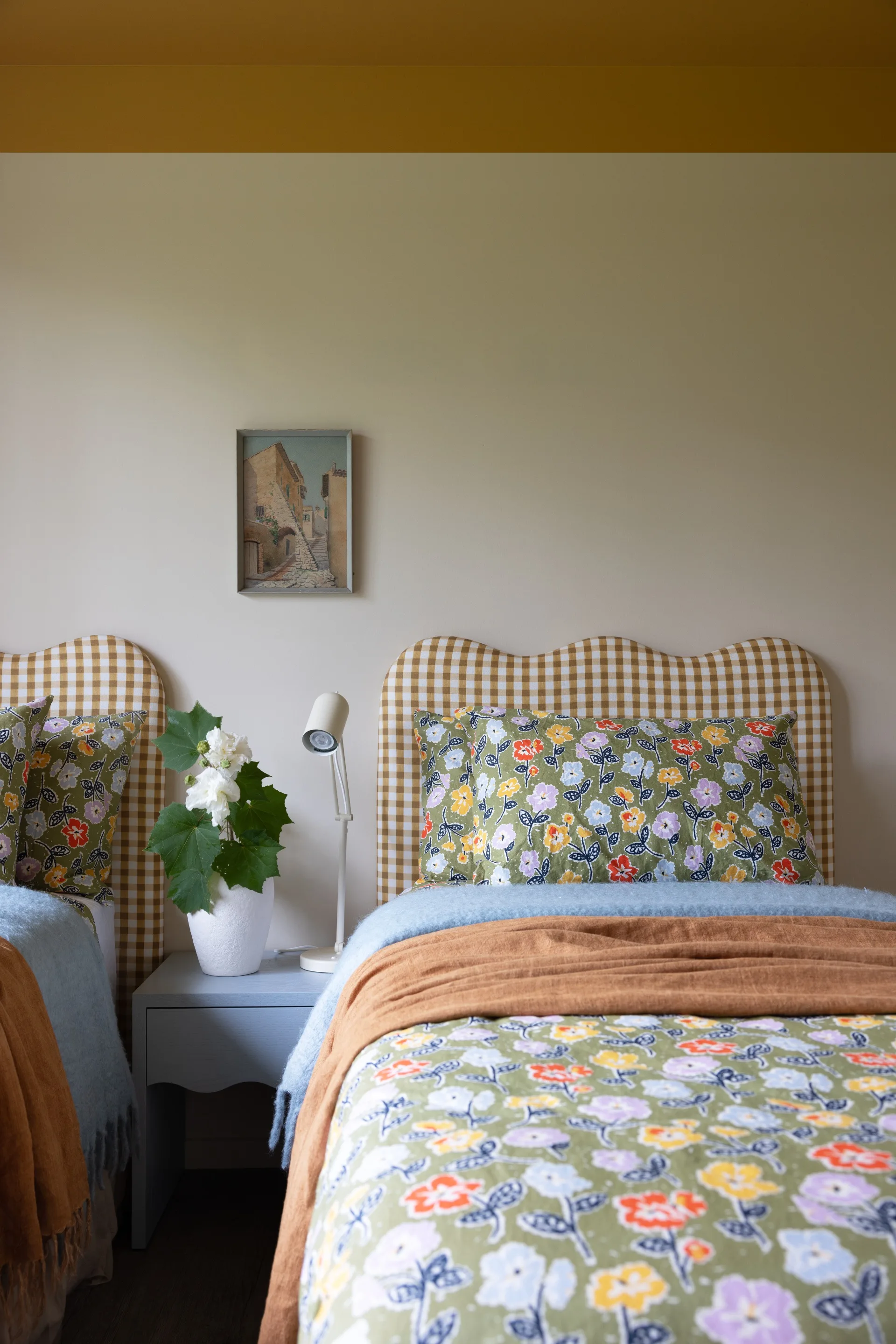
“Constantly refer back to your mood board for colour and texture cues – tick off items as you go.”
5. Form follows function
Make considered choices in your lighting, bedhead and side tables to match your scheme. Consider their design and how they work in with other items in the room. Match the tones – warm woods with gold-based metals, cool colours with silver and glass. Introduce a porcelain wall light or fabric lampshade in either crisp white, sombre black or one of the colours of your palette. Make a statement with patterned wallpaper or an oversized chunky throw.

6. Add a little wow factor
Choose where you’re able to splurge a little to add that extra layer of luxe. Think of a hotel room – bold artworks and statement lighting – or use your original inspiration and go the extra mile to bring in quality.
Even the simple addition of a handmade cushion in your lust-have fabric will up the ante. Special touches like this will take the room to the next level in the style stakes and give you pleasure every single day.
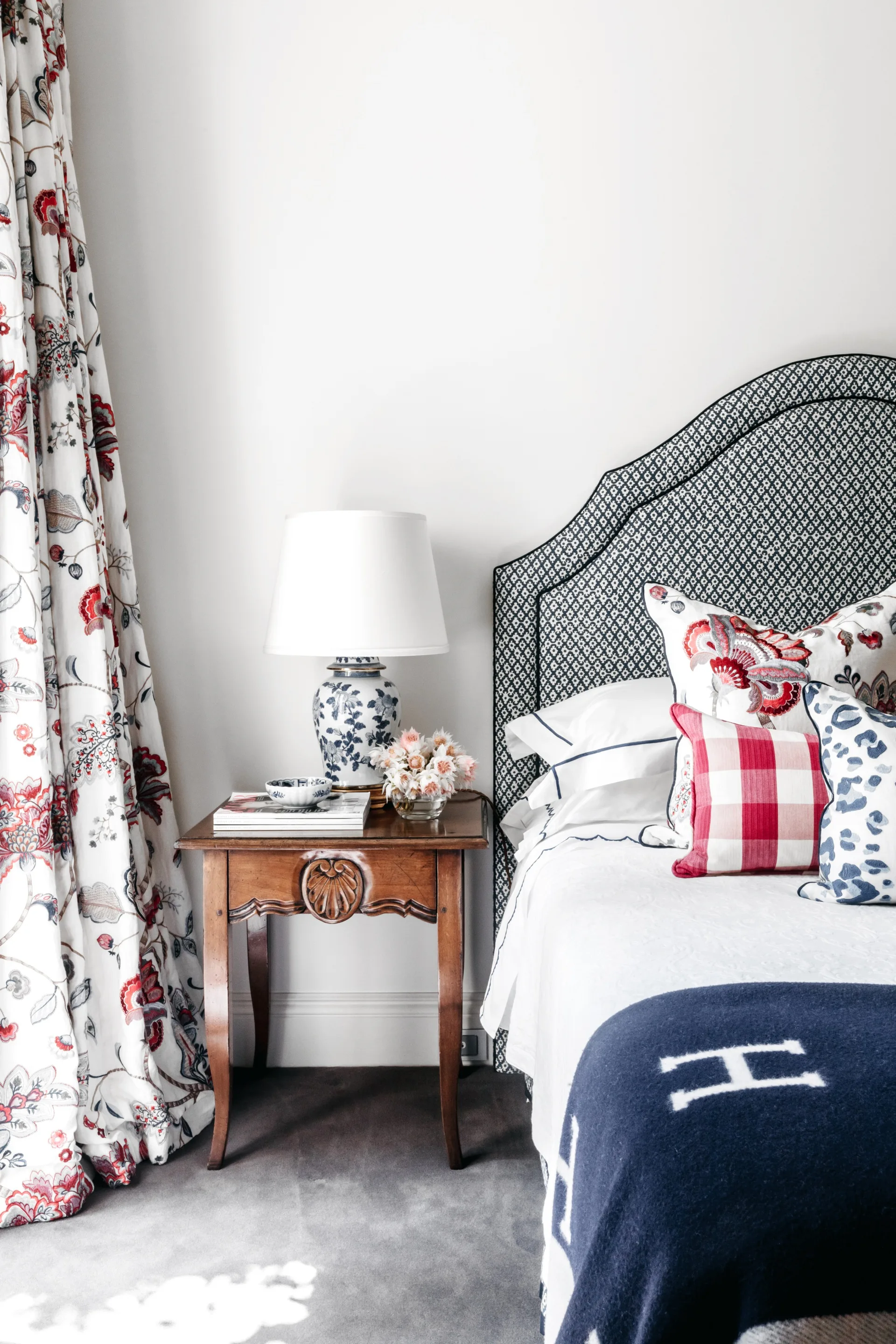
7. Edit your bedroom look
Stand back and look at the end result and don’t be afraid to remove, rather than add, elements to the whole. Try not to be swayed by impulse purchases and snap decisions along the way that take you in a different direction.
Take a photo and compare it alongside your original inspiration to see where the similarities lie, or highlight what’s not working. Be firm in your original idea and keep coming back to it.

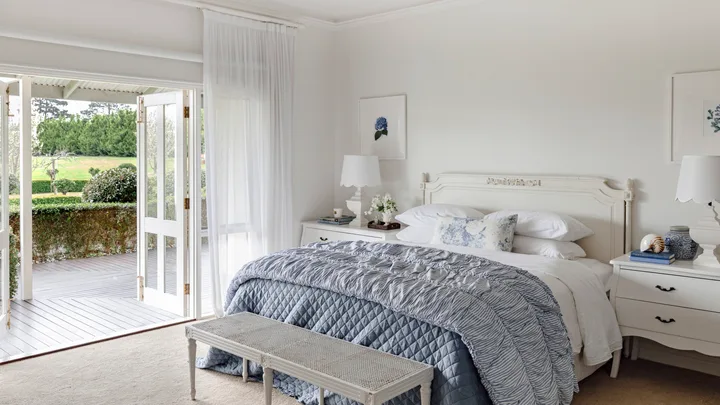 Photography: Kate Enno / Styling: Annalese Hay
Photography: Kate Enno / Styling: Annalese Hay
